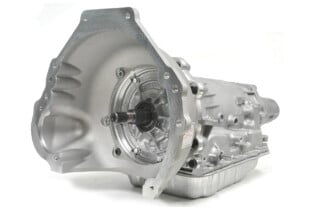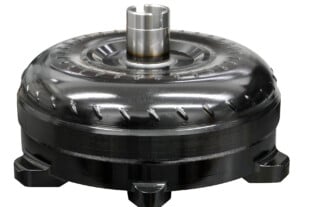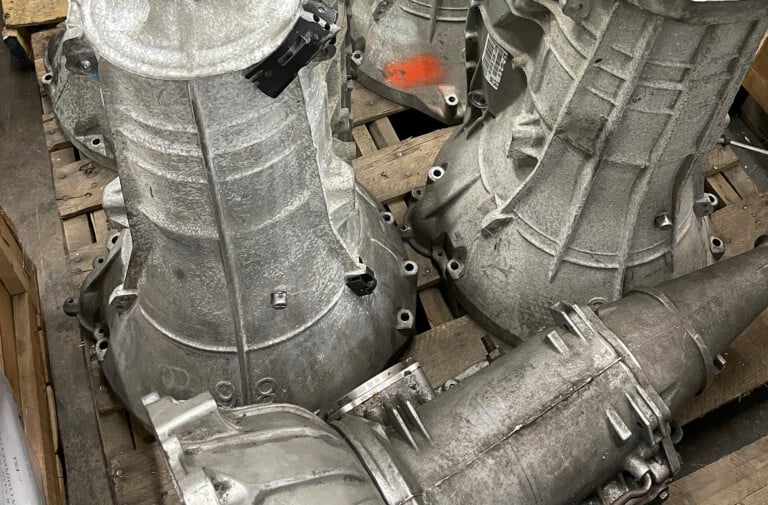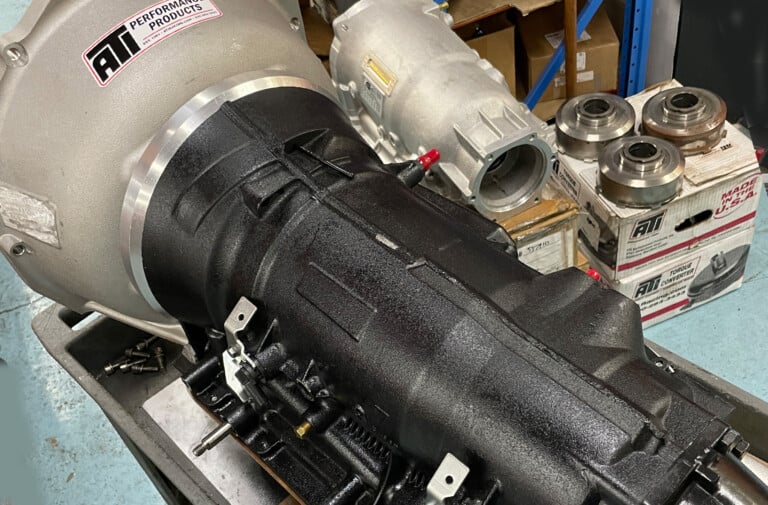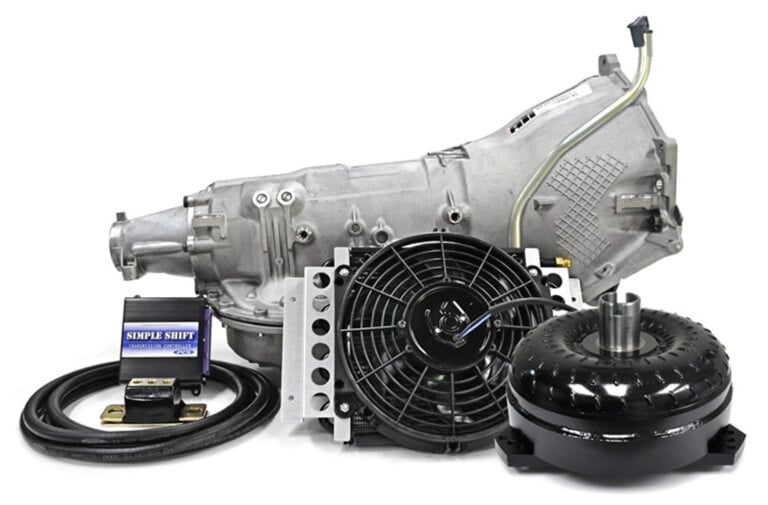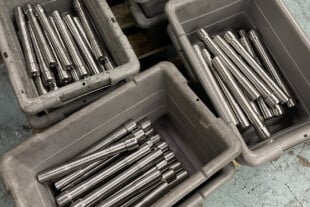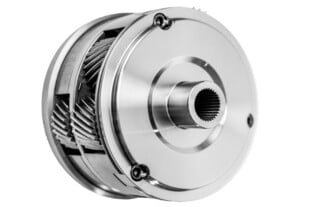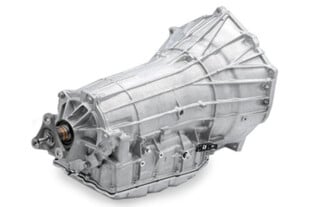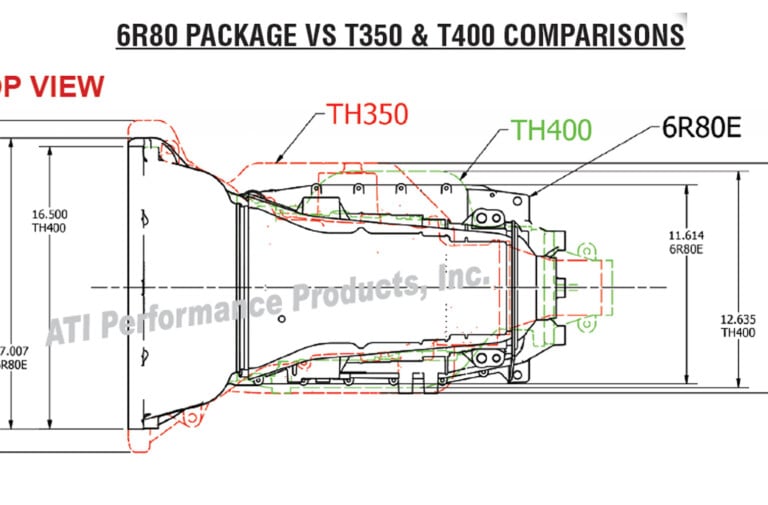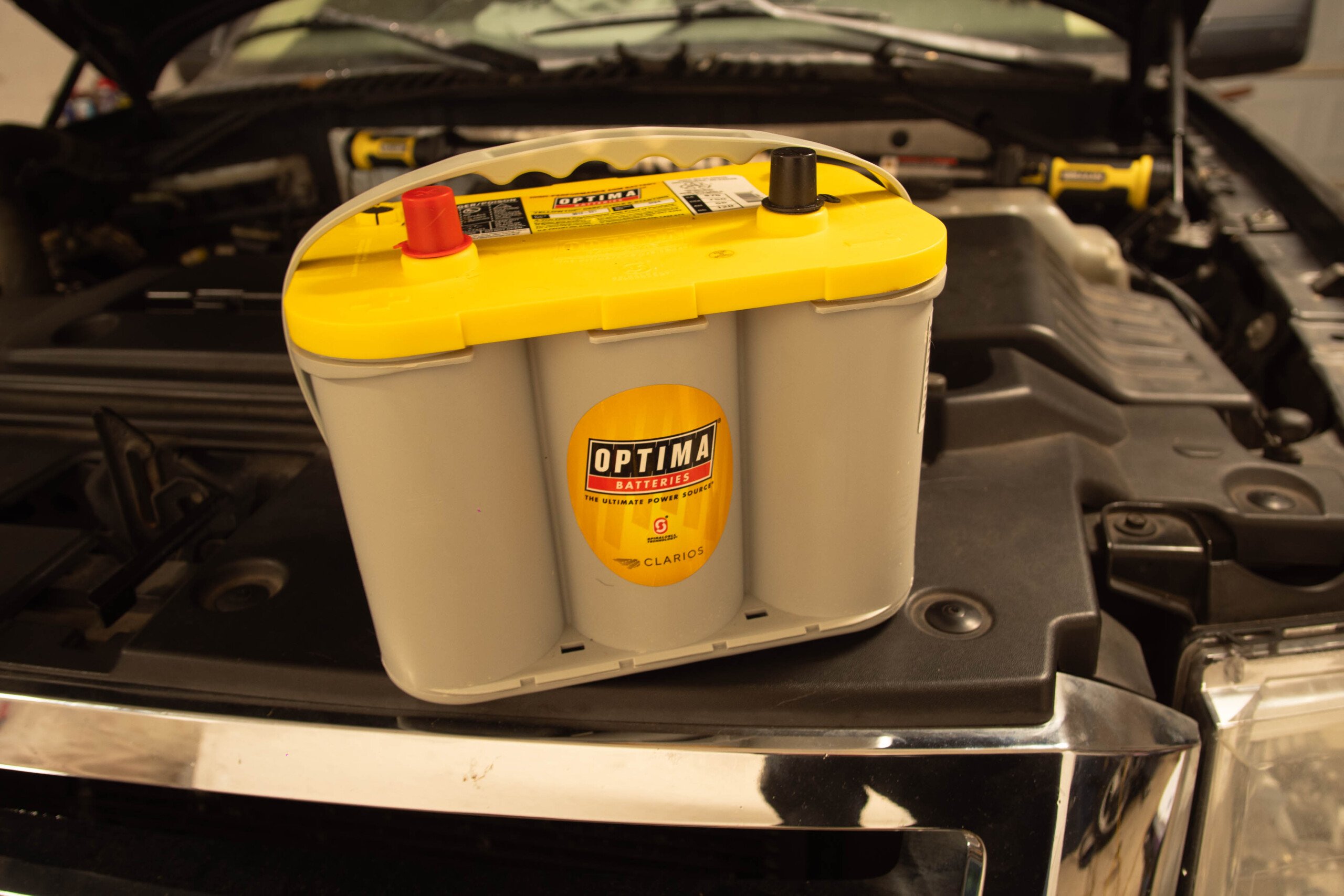Time marches on, and like many engine applications, the General Motors (GM) transmission choices suited for performance applications are faced with a generation gap. In case you didn’t know, the E-suffix on all GM “E” transmissions stands for electronically operated. The intimidation factor to these transmissions is their reliance on external electronics. This new circuitry performs shifts and other functions previously controlled by internal hydraulic passages. JC Beattie, Jr., chief of operations at ATI Performance Products discussed with us the future of “E” transmissions and what they offer the performance enthusiast.
As transmission models such as ATI’s street/strip Turbo 350 and 400s and the 700R4 overdrive gradually become harder to find, they’re “aging out,” and many will be replaced by newer models. ATI has made great efforts to exhibit the strong points of the 4L85E transmission. JC explained the similarities to the reliable Turbo 400 and how you can get this overdrive trans within an inch of length to the T-400.
With interchangeable bellhousing and tail shafts, these new-generation transmissions can adapt to different engines and overall lengths. ATI’s converter prowess can also interchange the flexplate and pump side of a converter for many combinations.
GM Four-Series Transmissions
The 4L60E
The first number in the transmission’s description denotes the number of forward speeds. “Starting with the most basic GM four-series transmission is the 4L60E. Though the case looks wildly different, the internals are comparable to the 700R4,” explains Beattie. “With the 4L60E, electronics have eliminated the problematic throttle valve cable (TV cable.) If the old TV cable loosens or goes out of adjustment, it will automatically kill your 700R4.”
Beattie continues, “The 700R4 is still adequate behind a 300-horsepower street rod or an engine with a carburetor. It is uncommon today to see just 300 horsepower in most street performance cars when even a simple junkyard LS engine eclipses that 300-horsepower mark.”
You can view ATI’s standard street rod transmission packages, where the 4L60E is offered for 500- and 550-horsepower applications. The horsepower capabilities increase with the 4L65E, which can handle up to 650 horsepower. The 4L60, 65, and 70 E-series transmissions have many good parts made by other companies for the street/performance application that Beattie uses without reinventing the same products. These are becoming mainstream GM E transmissions for general hot rod and muscle car applications.
The 4L80E
An improvement from the 4L60E is GM’s 4L80E transmission. The 4L60E and 4L80E are both four-speed automatics with overdrive. Beattie compares these two transmissions to an enthusiast choosing a Turbo 400 rather than a Turbo 350. Though each Turbo transmission is somewhat similar in design, the “guts” of the T-400 offer greater overall strength.
Beattie adds, “The 4L80E is a Turbo 400 all the way through to the direct drum. That means you can take existing T-400 guts and drop them right into a 4L80E transmission up to Third gear and the direct drum. That’s how we can build a 1,500 horsepower 4L80E, BUT you can never go into overdrive at wide-open throttle.”
A stock 4L80E is good for 500-plus horsepower right from the factory. When you compare these transmissions to the power an LS block can take, these are the LS block of the transmission world. – JC Beattie
ATI is well invested in the future of electronic transmissions from core cases, to new bellhousing designs, and many internal components.
“It wasn’t until we got to the 4L85E that we engineered many extreme-strength internal pieces,” Beattie describes. “We have a truly blueprinted, four-speed automatic racing transmission equipped with true drag racing shafts, clutches, and high-flow lube circuits for increased torque capacity.”
ATI has developed 4L85E street transmission/converter packages with 700- to 1,500-horsepower ratings. They also list packages for racing purposes that use specialized, billet converters, along with input and main shafts machined from 300m (a high strength low alloy steel) or Vasco materials. They also manufacture clutch hubs, pistons, bearing roller cases, and output shafts machined from 300M material.
Beattie outlines, “We have eight option packages for the 4L85E rated to 1,000 horsepower and four combinations rated to 1,500 horsepower. Each with various shift controls, valvebodies, gearsets, and transbrake options.”
The 4L80E is a four-speed automatic with overdrive for hot rod/muscle car applications that can handle 700 horsepower with higher horsepower kits available for 1,000 and 1,500 horsepower.
GM Six-Series Transmissions
The 6L80E
In late 2005, GM introduced its Six-series transmissions with the 6L80E. Again, the “6” prefix denotes a six-speed automatic. Beattie enthusiastically speaks about the broad 6L80E opportunities, “In stock form, this trans can handle 500 horsepower and offers easy highway cruising and seamless downshifts.”
ATI has developed and offers a list of stronger internals for the 6L series, such as gear sets, an intermediate shaft and hub, valving upgrades, and more. Their component list can beef up the 6L80E transmission for up to 1,000 horsepower capacities.
Clutch-To-Clutch Transmission Concept
GM’s six-series transmissions contain a new “clutch-to-clutch” shifting technology and two overdrive ratios. This clutch-to-clutch transmission design no longer uses transmission bands that have been integral to automatic gear-shifting since the Powerglide and up to the four-Series electronic transmissions. Beattie says, “The stock clutches in these transmissions are maxed-out in reliability at the 500-horsepower mark. At the 700-horsepower level, major internals can fail.”
The ATI shop has performed extensive research to know what OEM components can perform at what level of power. With improvements in design and materials, they can create new-generation electronic transmissions without the noted weak points.
“By eliminating the bands, the “clutch-to-clutch” design improves shift quality but reduces the number of torque-handling components,” Beattie points out. Instead, these new 6- and 8-series transmissions rely heavily on precise electronics to control the shifts.
“The 6L80E has one downfall for applications outside of use in an OEM vehicle where engine and transmission computers control the clutch-to-clutch gear shifting operation,” explains Beattie. “The 6L has always been a great transmission, but like all GM “E” transmissions, tuning is also a big part of this transmission’s function. For the 6L80E, you have no external ECU capability and must use someone who really knows what they’re doing with a laptop and software for a tune.”
With these computer control limitations, the 6L-series trans now has a “cooler brother” developed by ATI. “The six-series transmissions are a modular design, which means the bellhousing and tailshaft are interchangeable,” Beattie continues. “So, that’s where the whole 6R80E application came into play.”
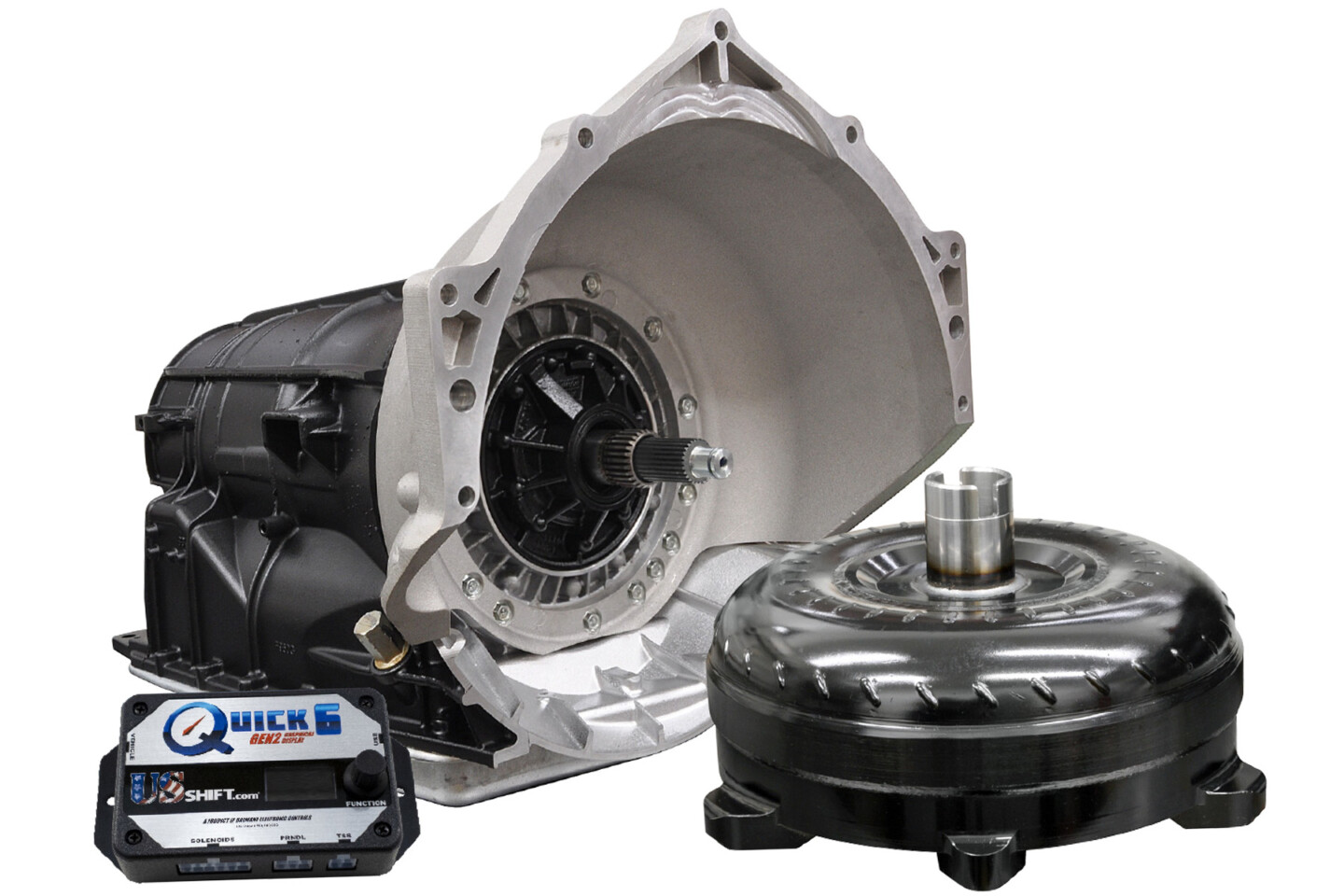
The 6R80E is the six-speed, “game changer” that can be completely controlled by a five-wire hookup to an external trans control box. This trans features a clutch-to-clutch shifting design that can handle 500 horses with stock components and over 1,000 horsepower with ATI upgrades.
The 6R80E
Somewhat like the 6L80E, Beattie saw an opportunity to use the versatile 6R80E. “It is an electronic six-speed, double-overdrive, automatic transmission that can be externally controlled when combined with a US Shift Quick 6 box,” he says. “You simply wire power and ground, tachometer, TPS, and ignition, and you completely control this transmission with or without a laptop.”
Yes, the 6R80E is a Ford-licensed and produced transmission used in mass by many Ford cars and trucks from 2009 to 2017. But, akin to the GM six-series transmissions, the modular design allows an interchangeable bellhousing and tail shaft that is easily adapted to a Chevy drivetrain.
The 6R80E can also be equipped with a transbrake and second-gear-leave capabilities. It can work in multiple applications, from street cars to racing. ATI also engineered a specialized torque converter for the 6R80E and Beattie describes it as, “The torque converter is a little bit of a hybrid. It’s a Ford on the pump side and a Chevy on the back side. You can bolt this directly behind a small-block, LS, or LT engine.”
The newer eight- and ten-speed GM transmissions require a combination of electronic controls from both the engine and transmission computers to manipulate the complex shifting process. ATI has developed performance hardware for these transmissions for use in late-model muscle cars and heavy-duty trucks.
Electronic Transmission Controls
Controlling these electronic transmissions with any “box” should not be intimidating. Beattie endorses and sells US Shift and Powertrain Control Solutions hardware that fully commands the transmission’s functions. “We use both brands, and they are great.”
To look at US Shift’s control boxes, for instance, the electronic control for the four-speed automatics has a selection knob. By turning the knob, you select what you want to control, then press down on the knob to choose from multiple-choice questions. Beattie adds, “You can turn knobs and make the thing shift as hard or soft as you want, and at various RPM. Typically, there is a second-gear transbrake if you want to really go play around and not spin the tires as bad.”
In these two ATI illustrations, the GM four- and six-series transmissions have similar outer dimensions compared to the Turbo350 and 400. If your hot rod or race car tunnel has negligible clearance, you may want to do some measuring.
Torque Cut Design
The 6R80E clutch-to-clutch trans control is more complex, with a “Shift in Progress” signal wire that initiates a momentary torque cut through the engine timing. Beattie explains further how the torque cut concept works, “When the computer decides to shift as you continue accelerating, the engine control jumps from, let’s say 20 degrees timing to zero degrees, then to -20 degrees in mid-shift. As the shift transfers to the next gear clutch, it jumps back to zero degrees, then back to 20 degrees advance. And it does all that in milliseconds which keeps the transmission alive.” Beattie finishes, “On the complex ECU engine controls, you can watch the timing go from 20, zero, -20, zero, and back to 20 almost instantly as the transmission shifts and you hear the exhaust go, ‘boom, boom, boom’.”
Eight- And 10-Series GM “E” Transmissions
The 8L90E And 10L90E
ATI offers heavy-duty internals for eight- and 10-speed GM transmissions, but these applications are typically applied to the factory performance cars and heavy-duty trucks that originally used these transmissions. Like with the 6L80E, these transmissions utilize integral communication between the engine computer and transmission controls for the clutch-to-clutch shifting.
“These are amazing transmissions in themselves,” describes Beattie. “External transmission controls may exist in the future, but a 10-speed transmission, in my opinion, is an effort by manufacturers to squeak out any improved EPA mileage number they can and do not truly add much of a benefit over, say the 6R80E for performance and racing.”
“Out with the old, and in with the new” may be another cliché that applies when speaking about GM “E” transmissions. They definitely have a lot to offer today’s performance enthusiasts. Just don’t be intimidated by a few wires when compared to the sturdiness, efficiency, and horsepower-handling factors these transmissions can offer.


